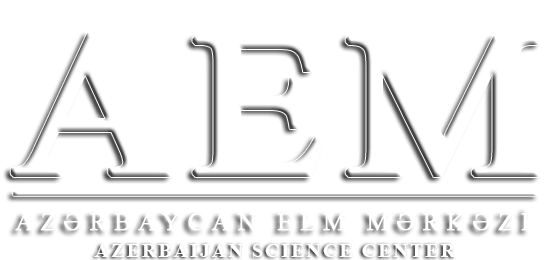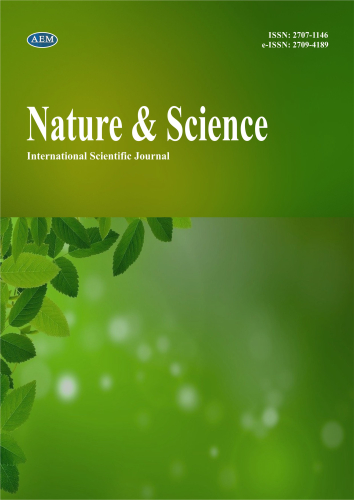DOI: https://doi.org/10.36719/2707-1146/40/24-27
Qumru Balaxanova
Azərbaycan Dövlət Pedaqoji Universiteti
BAKI ŞƏHƏR TORPAQLARINDA QEYDƏ ALINAN GÖBƏLƏKLƏRİN
EKOLOJİ VƏ TROFİK İXTİSASLAŞMASI
Xülasə
Məqalədə tədqiqatların aparılması üçün Bakı şəhərində müxtəlif təsirlərə məruz qalmış boz qonur torpaq tipindən 5 sahə seçilmişdir.
Təqdim olunan işin məqsədi Bakı şəhərinin müxtəlif xarakterli antropogen təsirə məruz qalan eyni torpaq tipinin, yəni boz qonur torpaqların göbələk biotasının növ tərkibinə, mikokompleksin formalaşmasında iştirak edən növlərin ekolo-trofik əlaqələr baxımından ixtisaslaşmasının təzahür formalarına, ekofiziologiyasına, eləcə də göbələklərin antropogen təsirlərə cavab reaksiyasına görə qiymətləndirilməsinə həsr edilmişdir.
Alınan nənticələrdən aydın oldu ki, tədqiq edilən biotoplarda qeydə alınan göbələklərin təmiz kulturalarının böyüməsi üçün əlverişli olan temperatur və ilkin pH görə xarakteristikası zamanı isə antropogen təsirlərin xarakterindən irəli gələn kəskin fərqlər müşahidə olunmur. Qeydə alınan göbələklərin əksəriyyəti temperatura münasibətdə mezofil, az bir hissəsi isə termotolerantdır və qeydə alınan göbələklər arasında psixrofillərə və həqiqi termofillərə isə rast gəlinmir. Mühitin pH-nın 4,9-5,9 arasında yerləşməsi qeydə alınan göbələklərin hamısı üçün optimal hesab edilsə də, qeydə alınan göbələklər arasında Aspergillus fumigatus, A.ochraceus, M.hiemalis və Ulocladium chartarum kimi alkotolerantlar da yer alır. Fərqli antropogen təsirlərə məruz qalan torpaqların mikobiotasının formalaşmasında iştirak edən göbələklərin təsirlərdən doğan cavab reaksiyasının müəyyənləşdirilməsi zamanı aydın oldu ki, nisbi torpaqlarda rast gəlinən induksiya olunmaqla aktivləşən, neftlə çirklənmiş torpaqlarda isə həssas (ingibirləşən qrup) növlərə rast gəlinmir. Bakı şəhərinin fiziki-kimyəvi göstəricilərinə, antropogen təsirin xarakterinə görə fərqlənən torpaq sahələrinin mikobiotasının formalaşmasında 53 göbələk növü iştirak edir. Qeydə alınan göbələk növlərinin sayı nisbi torpaqlara xas olan mikomüxtəlifliyin növ tərkibinə görə azalmasına səbəb olur ki, bu da özünü ən yüksək səviyyədə neftlə çirklənmiş torpaqlarda biruzə verir.
Açar sözlər: bioloji xüsusiyyətlər, çirklənmə mənbələri, torpaq, torpaqların nəmliyi, ekoloji vəziyyət, humusun miqdarı
Gumru Balakhanova
Azerbaijan State Pedagogical University
Ecology and trophic specialization of fungi recorded in the lands of Baku
Abstract
In the article, 5 areas of gray-brown soil type, which have been affected by various impacts, have been selected for conducting research in Baku city.
The purpose of the presented work is to assess the species composition of the fungal biota of the same soil type of Baku city, which is subject to various types of anthropogenic influence, i.e. gray-brown soils, the manifestations of specialization of the species involved in the formation of the mycocomplex in terms of eco-trophic relations, ecophysiology, as well as the response of fungi to anthropogenic influences. is dedicated.
It was clear from the obtained results that during the characterization according to the temperature and initial pH favorable for the growth of pure cultures of fungi recorded in the studied biotopes, sharp differences arising from the nature of anthropogenic effects are not observed. Most of the recorded fungi are mesophilic in relation to temperature, and a few are thermotolerant, and psychrophiles and true thermophiles are not found among the recorded fungi. Although the pH of the medium is between 4.9 and 5.9, it is considered optimal for all recorded fungi, but alcohol-tolerant ones such as Aspergillus fumigatus, A. ochraceus, M. hiemalis and Ulocladium chartarum are among the recorded fungi. During the determination of the responses of the fungi involved in the formation of the mycobiota of the soils exposed to different anthropogenic influences, it became clear that the inducibly activated species found in the relative soils, and the sensitive (inhibitory group) species are not found in the oil-contaminated soils. 53 species of fungi are involved in the formation of the mycobiota of the soil areas, which differ according to the physico-chemical indicators of the city of Baku and the nature of the anthropogenic influence. The number of recorded fungal species leads to a reduction in relative soil-specific mycodiversity by species composition, which is most pronounced in oil-contaminated soils.
Keywords: biological characteristics, pollution sources, soil, soil moisture, ecological condition, humus contentcox

